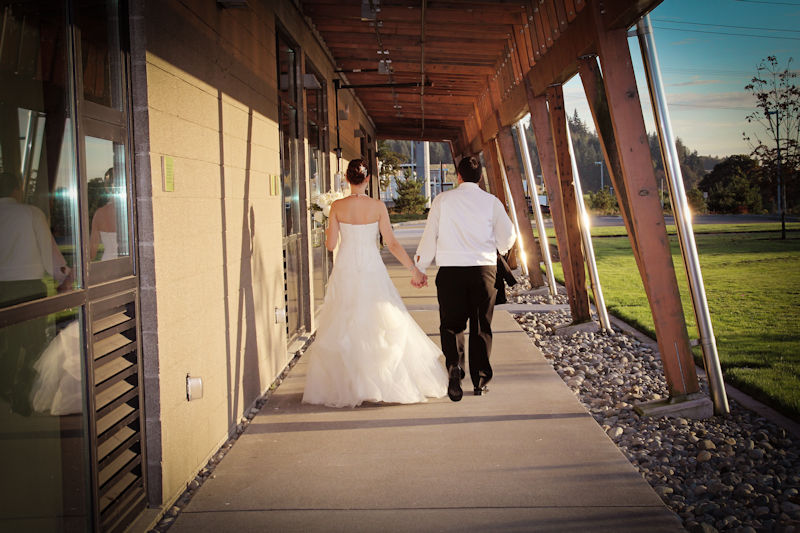
The Leadership in Energy and Environmental Design (LEED) Platinum-certified Brightwater Center is located next to a water resource recovery facility (WRRF) and has hosted about 30 weddings to date. Photo courtesy of A Moment’s Reflection Photography (Clinton, Utah).
Couples looking to tie the knot in the Pacific Northwest need to look no further than the Brightwater Center. Located about 32 km (20 mi) northeast of Seattle, the venue features romantic views overlooking 45 ha (110 ac) of parks and natural landscapes, 5 km (3 mi) of walking trails, and an unexpected neighbor — the 144,000 m3/d (36-mgd) Brightwater Treatment Plant.
King County Wastewater Treatment Division (WTD; Seattle) manages the Brightwater Center. Building a water resource recovery facility (WRRF) immediately adjacent to a community center was no accident. The center was designed to bridge the gap between the WRRF and its customers by offering a unique, event-rental space that invites guests to learn more about water and the environment.
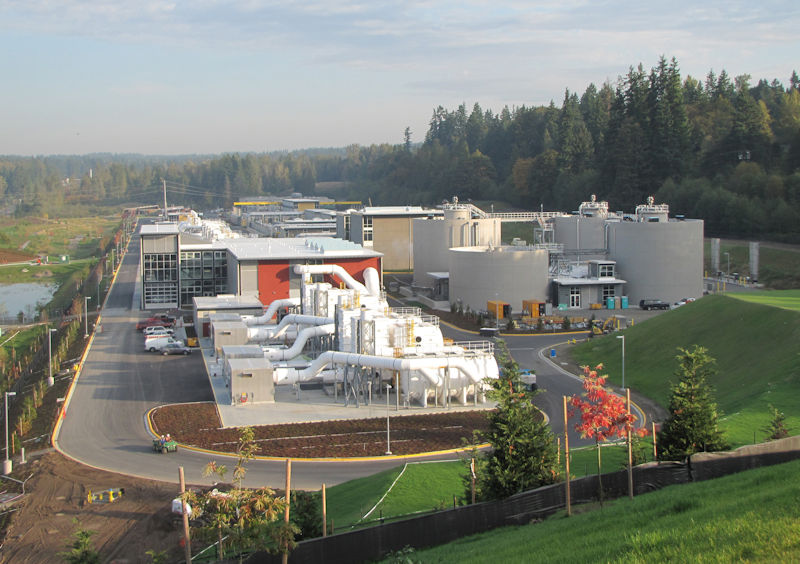
Education and outreach staff at Brightwater Center regularly coordinate tours of the 144,000 m3/d (36-mgd) Brightwater WRRF for school groups and professional audiences. Photo courtesy of Ned Ahrens/King County (Wash.).
Weddings represent just a small fraction of events at the facility. In 2017, Brightwater Center hosted 372 total events, welcoming an estimated 30,000 guests. With educational signage around every corner, whether walking down the aisle or attending a science, technology, engineering, and math-focused summer camp, guests learn about the value of water.
“Even if you’re here for a rental event, or a wedding, or whatever, you go through the exhibit hall to go to the bathroom,” said Brightwater Center Director Susan Tallarico. “You’re going to get some education about water and how to keep it clean.”
By hosting events, King County WTD raises funds to support a robust curriculum of environmental education programming for all ages, free of charge. In 2017, educational programs at the facility reached an estimated 17,000 people, according to Tallarico.
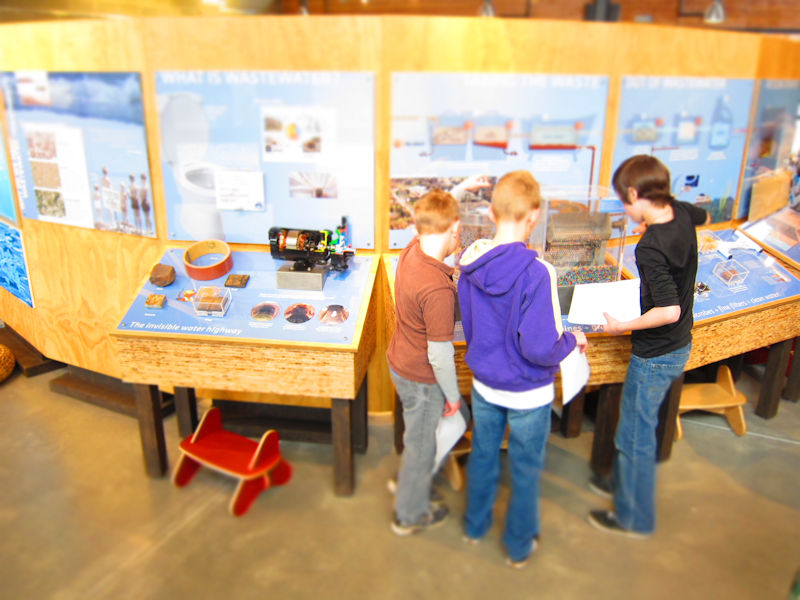
The entire Brightwater Center features signage and museum-style exhibits that get visitors thinking about their role in water stewardship. “It’s not just the duty of a wastewater treatment facility or the government. It’s all of our jobs to make sure that water goes back into the cycle as clean as it can be,” said Susan Tallarico, Brightwater Center director. Photo courtesy of Ahrens.
Students from several states away travel to Brightwater Center for hands-on field trips and WRRF tours. This gives King County WTD staff the opportunity to introduce students to such concepts as freshwater ecosystems and stormwater management. Families can enjoy the center’s museum-style exhibits about the water cycle and water conservation. And wastewater operators and engineers attend training courses on public communication at the center.
“It’s definitely a trend that I see that utilities, and government in general, are seeing the importance of being open and transparent and having a relationship with their community,” Tallarico said.
Scent-free ceremonies
When the complex opened in 2011, King County WTD wanted to create a flexible community center suitable for a diverse range of functions. The idea of hosting weddings at the center began as a joke. When people began first asking if couples would exchange vows in the shadow of a WRRF, many said it would never happen, Tallarico said.
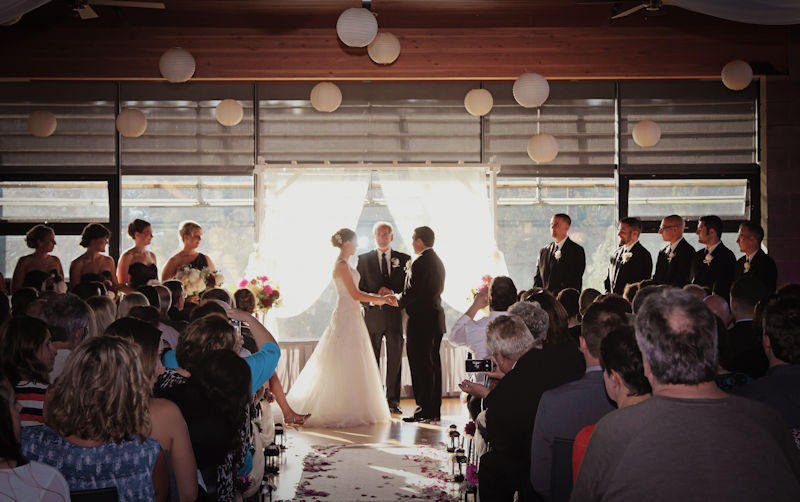
Brightwater Center has become an unexpected destination for weddings during the last 5 years, offering both indoor and outdoor ceremonies. Couples are attracted to views from the property that includes more than 45 ha (110 ac) of parks and natural landscapes. Photo courtesy of A Moment’s Reflection Photography.
But within the last 5 years, Brightwater has hosted about 30 weddings. Tallarico says when most couples see the state-of-the-art design of the building and its picturesque outdoor views, it either never occurs to them that the building next door processes wastewater, or they think of it as a quirk that makes their special day even more memorable.
The fact that some couples do not immediately notice the WRRF speaks volumes about its attention to odor control. Anticipating a large volume of visitors next door, designers of the Brightwater WRRF invested about $80 million into odor-control measures, including capping off all incoming pipes, Tallarico said.
The Brightwater Center was built on the former site of a soup-making factory, so neighbors already were used to strong odors. King County WTD faced resistance from neighbors when it took over the property, but once operations began, locals were surprised to find the scent of the neighborhood had improved instead of worsened, Tallarico said. Since opening, the Brightwater Center never has received a complaint about odor.
A sustainable model for public outreach
While the goal of Brightwater Center is to get visitors and ratepayers to see their local utility as more than just a bill that comes in the mail, it also is a place to demonstrate the latest advancements in sustainable construction, Tallarico said.
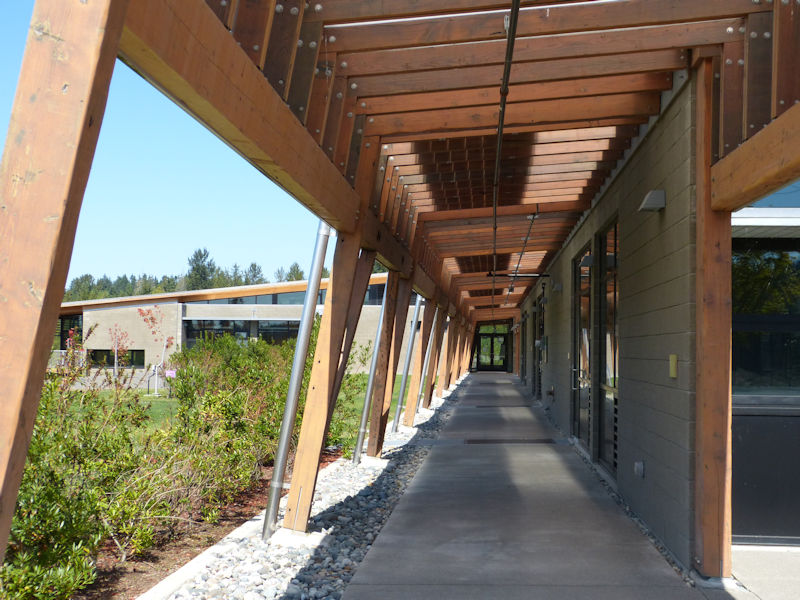
Brightwater Center offers free environmental education programs to the surrounding community. In 2017, the space was used for a total of 372 rental events, including parties, seminars, weddings, and other gatherings bringing about 30,000 people to the space. Photo courtesy of Ahrens.
The solar-powered Brightwater Center earned a Leadership in Energy and Environmental Design (LEED) Platinum certification from the U.S. Green Building Council (Washington, D.C.). It uses gas from WRRF digesters to run radiant heat through the center’s floors. An on-site demonstration garden, staffed by community volunteers, is nurtured with recycled water, which also flushes Brightwater’s toilets. These measures mean the center can produce slightly more energy than it needs to operate, allowing King County WTD to sell excess energy into the community grid, further supporting Brightwater’s environmental education programs.
As more utilities work toward greater visibility in their community, Tallarico says that getting the word out about water treatment and conservation need not come with the price tag of a brand new, state-of-the-art facility. It begins with attracting creative and impassioned staff members that may be outside the norm for traditional WRRFs.
“If you don’t have an education person at your utility, get somebody on your team who really understands the values and needs of the utility,” Tallarico said. “Having dedicated education staff who work for your utility is key.”
— Justin Jacques, WEF Highlights








November 21, 2018
Featured